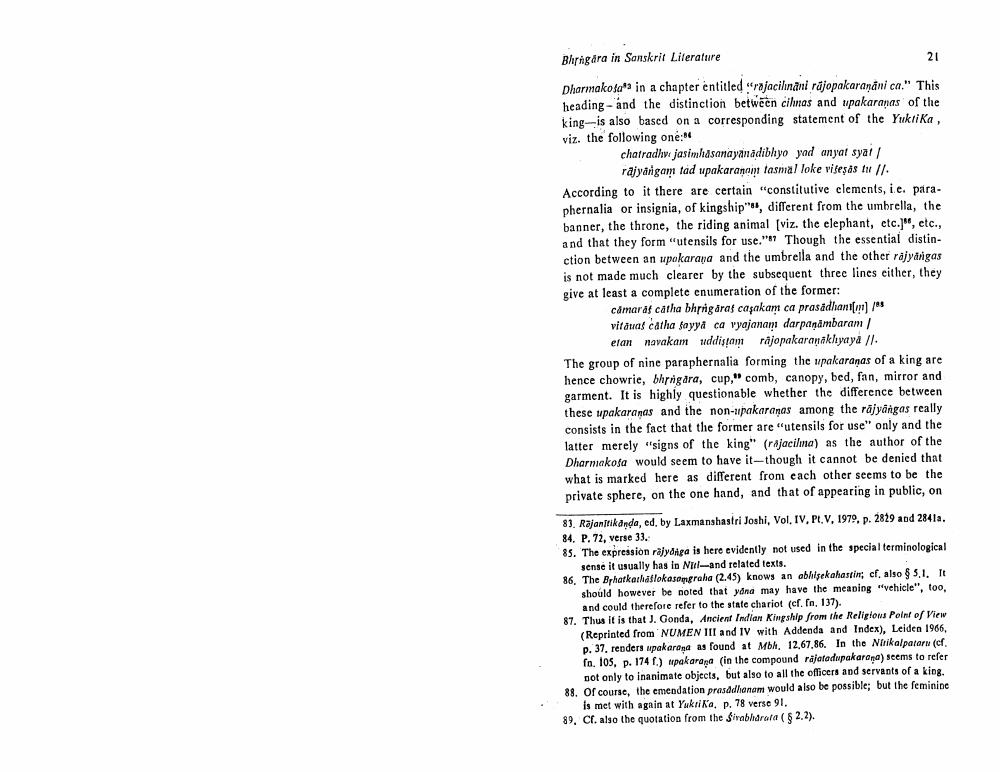________________
Bhragara in Sanskrit Literature
Dharmakota in a chapter entitled rajacihnani rajopakaranani ca." This heading - and the distinction between cihnas and upakaranas of the king is also based on a corresponding statement of the Yuktika, viz. the following one:
chatradhw jasimhasanayanadibhyo yad anyat syal /
rajyarlgam tad upakaranan tasmal loke visesas tu II. According to it there are certain "constitutive clements, i e. paraphernalia or insignia, of kingship"", different from the umbrella, the banner, the throne, the riding animal (viz. the elephant, etc., etc., and that they form "utensils for use."*7 Though the essential distinction between an upokarawa and the umbrella and the other rajyanigas is not made much clearer by the subsequent three lines either, they give at least a complete enumeration of the former:
câmaraf catha bhrrigarat caşakam ca prasadhani[m] / vitauas catha sayyå ca vyajanam darpanambaram /
elan navakam uddistam rajopakaranaklıyaya //. The group of nine paraphernalia forming the wpakaranas of a king are hence chowrie, bhrrigara, cup," comb, canopy, bed, fan, mirror and garment. It is highly questionable whether the difference between these wpakarands and the non-upakaranas among the rājyängas really consists in the fact that the former are "utensils for use" only and the latter merely "signs of the king" (rajacima) as the author of the Dharmakosa would seem to have it-though it cannot be denied that what is marked here as different from each other seems to be the private sphere, on the one hand, and that of appearing in public, on
83. Rajanitikanda, ed. by Laxmanshastri Joshi, Vol. IV, PL.V, 1979, p. 2829 and 2841a. 84. P. 72, verse 33. 85. The expression rajyonga is here evidently not used in the special terminological
sense it usually has in Nuland related texts. 86. The Behatka haflokasomgraha (2.45) knows an abhisekohastin; cf, also 8 5.1. It
should however be noted that yöna may have the meaning "vehicle", too,
and could therefore refer to the state chariot (cf. fn, 137) 87. Thus it is that J. Gonda, Ancient Indian Kingship from the Religions Point of View
(Reprinted from NUMEN III and IV with Addenda and Index), Leiden 1966, p. 37. renders upakarona as found at Mbl. 12,67.86. In the Narikalpataru (cf. fo. 105, p. 174 .) mpakarana (in the compound rajatadupakarana) seems to refer
not only to inanimate objects, but also to all the officers and servants of a king 88. Of course, the emendation prasddhanam would also be possible, but the feminine
is met with again at Yukrika, p.78 verse 91. 89. Cf. also the quotation from the Sirabhidrala ($ 2.2).




